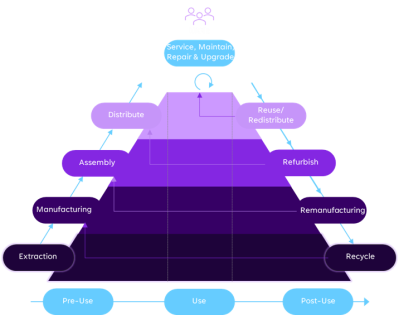It’s one thing to talk about sustainability. It’s another to embed it into the way your business actually works.
That’s exactly what remanufacturing does. And if the word makes you think of dusty shelves, warranty parts, or “second best,” it’s time for a mindset shift.
At a recent IFS webinar, a panel of experts broke down the challenges, business drivers, and enabling technologies behind modern remanufacturing. Their message was clear – if you’re in discrete manufacturing and not yet on this journey, you’re missing out on profit, performance, and long-term advantage.
This blog is your shortcut to the insights discussed, click here to watch the full webinar.
What Remanufacturing Really Means in 2025
Remanufacturing isn’t about fixing broken parts. It’s an industrialized process that brings used products back to life; to a condition as good as new, and often better.
“We’re not repairing. We’re rebuilding to specification—using a mix of reused, repaired, and new parts—all controlled, traceable, and built for quality.”
— Mikael Hultin, IFS
Remanufacturing is also not a new idea – it has in fact been around since the time of the second world war, when it emerged as a resource-efficient way to produce and maintain heavy machinery. But in 2025, more companies are recognizing its value; not just for sustainability, but for operational continuity and cost efficiency.
Climbing the Value Hill, Again
Imagine a product’s life cycle as a hill. You start with raw materials, manufacture, distribute, and use the product. Traditionally, once it wears down, it’s scrap.
Remanufacturing changes that. It lets you “climb the hill” again, maintaining the value that was originally built into the product.
“An engine with 20 years of service can go another 20 through remanufacturing,” Hultin explained.
“That’s not just reuse—it’s resilience.”
Why It’s a Triple Win – Business, Customer, Planet
Leena Kossila, author and expert on circular logistics, reflected on insights from her conversations with leading manufacturers:
“It’s a win for the business. A win for the customer. And a win for the environment.”
Let’s break that down:
- Business: In industries like tire manufacturing, raw material costs can account for up to 70% of total production expenses. Remanufacturing significantly reduces these costs by reusing existing materials.
- Customer: Buyers get high-performance, warrantied products at a lower cost, offering value comparable to new items.
- Planet: Remanufacturing processes can lead to substantial energy savings and significant reductions in greenhouse gas emissions over the product’s life cycle.
Why Aren’t More Manufacturers Doing It?
Based on findings from a recent industry study Kossila referenced, only around 30% of manufacturers in Sweden and Finland currently have remanufacturing operations in place.
It’s not intention—it’s complexity.
Four big hurdles stand in the way:
- Unpredictable core returns – You don’t always know what’s coming back, when, or in what condition.
- Reverse logistics – Getting products back from the field is harder than shipping them out.
- Component mix management – Remanufacturing means blending old and new components with care.
- Data complexity – You need systems that handle traceability, warranties, inspections, and more.
The Technology to Tame It
Here’s the good news, IFS Cloud is built to handle this complexity—natively, not as a bolt-on.
“It’s all embedded. That means planning, costing, execution, inventory, traceability—it’s all covered, without workarounds.”
— Andreas Nygren, IFS
IFS Cloud supports:
- Disassembly and inspection workflows
- Core tracking and inventory valuation
- Component reuse prioritization (via MRP)
- Cost rollups for reused and new components
- Full shop floor integration
Whether you’re working to order or to forecast, the system plans intelligently, prioritizing reused parts and backing them up with new ones as needed.
What the Future Looks Like
Kossila believes the market will grow faster in times of turbulence—and that’s exactly where we are. Material shortages, customer demands, and regulatory pressure all make remanufacturing a smarter play.
And it’s not just engines and heavy machinery anymore. From robotics and electronics to timber beams and toner cartridges, remanufacturing is spreading across industries.
“With the right logistics, market, technology—and the right IT system—reman becomes scalable,” said Kossila. “And that’s the key.”
This blog is a short summary, designed to highlight the key takeaways from the webinar. But if you want to hear directly from the people leading the charge, watch the full 30-minute session.
